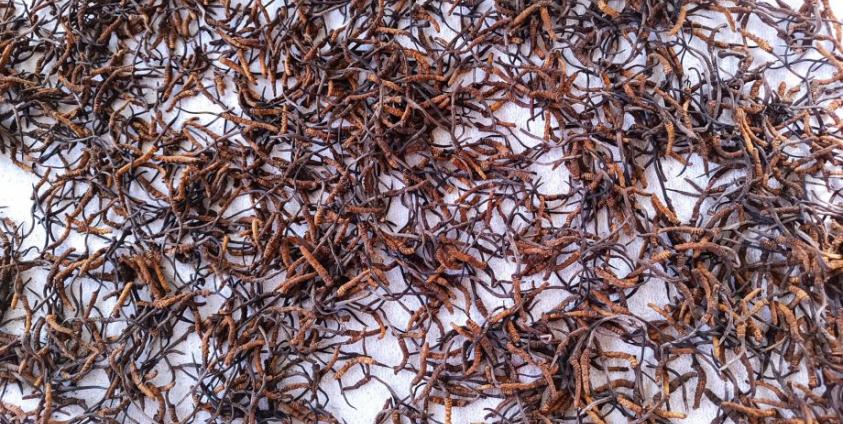Caterpillar fungus (Cordyceps), locally called Sheepati, has become scarce in the Putao area of Kachin State in northern Burma. Cordyceps form when ground-dwelling caterpillars are infected with the Ophiocordyceps sinensis fungus which slowly takes over their bodies and kills them, finally sprouting a spore-filled stalk through the caterpillar’s head in order for the fungus to reproduce.
In recent years, Cordyceps have become increasingly scarce across the Tibetean plateau. The decline is likely cause by a mix of factors, especially unsustainable harvesting practices and warming temperatures.
Rawang and Lisu people, the indigenous people in the Putao area, are worried about the scarcity of the caterpillar fungus because the harvesting of the fungus is an important part of the local economy.
" It has been difficult to find Sheepati this year, we have only been able to harvest a small amount. I don’t know for certain why the growth rate of Sheepati has reduced dramatically this year. I guess that it may be related to weather conditions in this area," Putao resident Sanlu Ram Hsein (source 1) told NMG.
Sanlu Ram Hsein (source 1) said that indigenous Rawang and Lisu people typically harvest Sheepati in the ice-capped mountain areas around Putao in May and June every year. Local people reported harvesting Sheepati in numerous areas around Putao Township, including Majoi Razi, Khanlan Razi, Panandin and Nogmung.
 Sanlu Ram Hsein (source 1) said that another likely reason for the declining growth rate is that in recent years some people have engaged in unsustainable harvesting practices and overharvesting.
Sanlu Ram Hsein (source 1) said that another likely reason for the declining growth rate is that in recent years some people have engaged in unsustainable harvesting practices and overharvesting.
“Some people have been so greedy that they don’t just harvest individual fungi, but dig out the entire area with a hoe if they find a cluster of Sheepati. It means they damage the ability of Sheepati to grow again in the future. People are so unthoughtful and undisciplined. This is probably one of the causes of the decreasing production rate," he (source 1) told NMG.
The scarcity of caterpillar fungus is now being reflected in its price. Local people reported that the current price of Sheepati is more than 30 million Kyat per 1.6 kilograms. In 2021, the price was about 20 million Kyat per 1.6 kilograms. This dramatic price increase Caterpillar fungus is a wild product, and it is very difficult to grow caterpillar fungus on artificial substrates commercially on farms. The fungus grows best naturally in the ice- capped mountains around Putao in Burma, as well as other parts of the Tibetan plateau including Bhutan, Nepal and south-western China.
China is the major buyer of the Sheepati harvested in Putao. The fungus is an important ingredient in Chinese traditional herbal medicine. While China remains the largest consumer of Caterpillar fungus there has recently been a growing demand for the fungus from Western countries as well.







